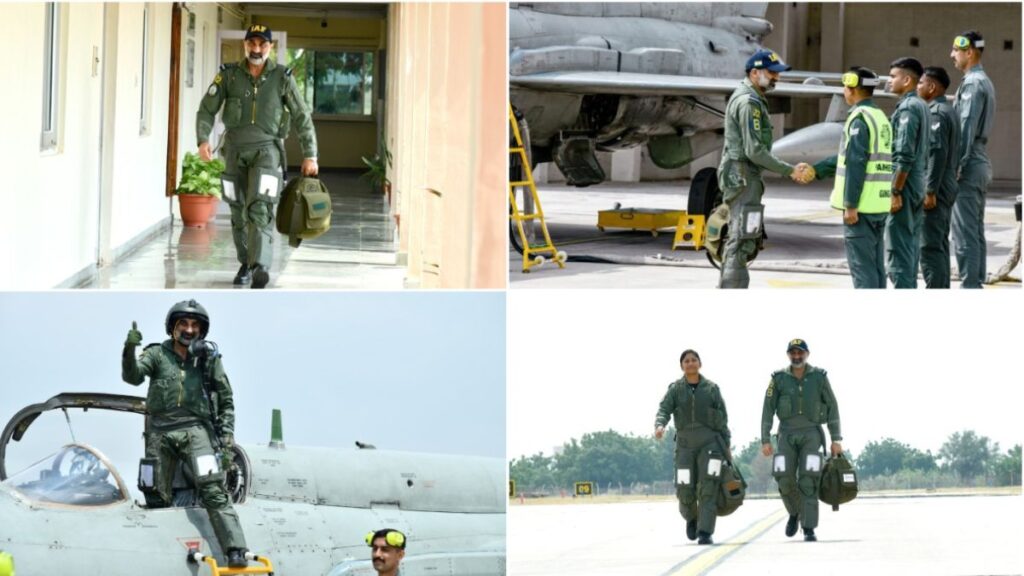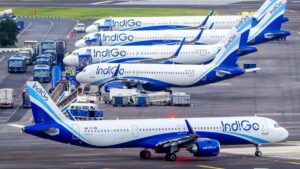Air Chief Flies MiG-21 Before Bidding Farewell to the Iconic Fighter That Served IAF for Six Decades

The iconic Mig-21 fighter jet will be retired from service of IAF on September 26, 2025
The Indian Air Force is preparing to say goodbye to one of its most iconic aircraft, the MiG-21, which has been in service for over six decades. The legendary supersonic jet, India’s first supersonic fighter, will officially retire from combat duties on September 26, 2025. After that, the MiG-21 will only be seen in museums and documentaries, leaving behind a legacy that shaped the IAF’s modern history.
To mark the beginning of this farewell, the Chief of the Air Staff, Air Chief Marshal Amar Preet Singh, recently visited No. 23 Squadron “Panthers,” the last unit flying the MiG-21. In a symbolic gesture, he flew a fighter sortie and later joined a formation led by Squadron Leader Priya, underlining both tradition and the changing face of the Air Force. For many veterans and aviation lovers, this moment is heavy with nostalgia, as the fighter that once defined India’s skies prepares for its final curtain call.
Honouring the enduring legacy of MiG-21, the Chief of the Air Staff visited No. 23 Sqn "Panthers", the last squadron operating the legendary fighter. The CAS flew a fighter sortie, and also in a formation led by Sqn Ldr Priya, symbolising both tradition and transformation. On 26… pic.twitter.com/gdeNk2ghbN
— Indian Air Force (@IAF_MCC) August 25, 2025
The MiG-21 Story
The MiG-21, designed by the Mikoyan-Gurevich Design Bureau in the Soviet Union, is one of the most successful fighter jets in aviation history. It is the most-produced supersonic jet ever built, the most-produced combat aircraft since the Korean War, and at one point had the longest production run of any fighter. Air forces in nearly 60 countries have flown its variants, but India remains its most prominent operator.
India inducted the MiG-21 in 1963, making it the first supersonic fighter in the IAF. The decision to buy it was made in 1961, when India chose the Soviet jet over several Western options. The deal also included a transfer of technology, allowing India to assemble and later build the aircraft locally. The first batch of Indian pilots trained in Kazakhstan on MiG-15s and MiG-17s before transitioning to the MiG-21, forming the No. 28 Squadron – India’s first supersonic squadron.
MiG-21 in Wars and Beyond
Though its role in the 1965 Indo-Pak War was limited due to small numbers and pilot training issues, it provided valuable lessons. Encouraged by positive feedback from pilots, India expanded its orders and invested in maintenance and training infrastructure. Over time, the MiG-21 became the backbone of the IAF.
Since induction, India has operated over 1,200 MiG-21s, including 600 license-built by Hindustan Aeronautics Limited. At its peak, 19 squadrons – nearly 400 aircraft – were in service. The jet was central to many operations, giving India a decisive edge in the skies for decades.
In December 2013, the IAF retired the MiG-21FL after 50 years of service. Later, in 2022–23, the force decided to phase out the MiG-21 Bison fleet and replace it with the indigenously developed Tejas fighter jet. The Bison made its ceremonial farewell during the 2023 Air Force Day flypast at Prayagraj, marking its final public appearance in IAF colours.
The Last Flights
The final official MiG-21 flights took place on August 18 and 19, 2025, at the Nal Air Force Station in Bikaner, which housed the last two squadrons of the aircraft. Interestingly, these dates also coincided with the shooting of the Bollywood film Love & War, where the MiG-21 reportedly plays a pivotal role in the story. During this period, Air Chief Marshal Amar Preet Singh himself flew solo sorties on the fighter, honouring the machine that defined generations of IAF pilots.
Now, only a handful of MiG-21s remain with the 23 Squadron. Their last mission will be flown on September 26, 2025. After serving for 62 years – two-thirds of the Air Force’s history – the MiG-21 holds the record as the longest-serving aircraft in the IAF. It is also the largest fleet ever operated by the force, with 850 aircraft in total.
For many Indians, the MiG-21 is more than a fighter jet. It is a symbol of India’s rise as an air power, a machine that stood guard through wars and crises, and a reminder of the courage of the pilots who flew it. As the IAF prepares to close this chapter, the aircraft’s roar will echo forever in India’s aviation story.









